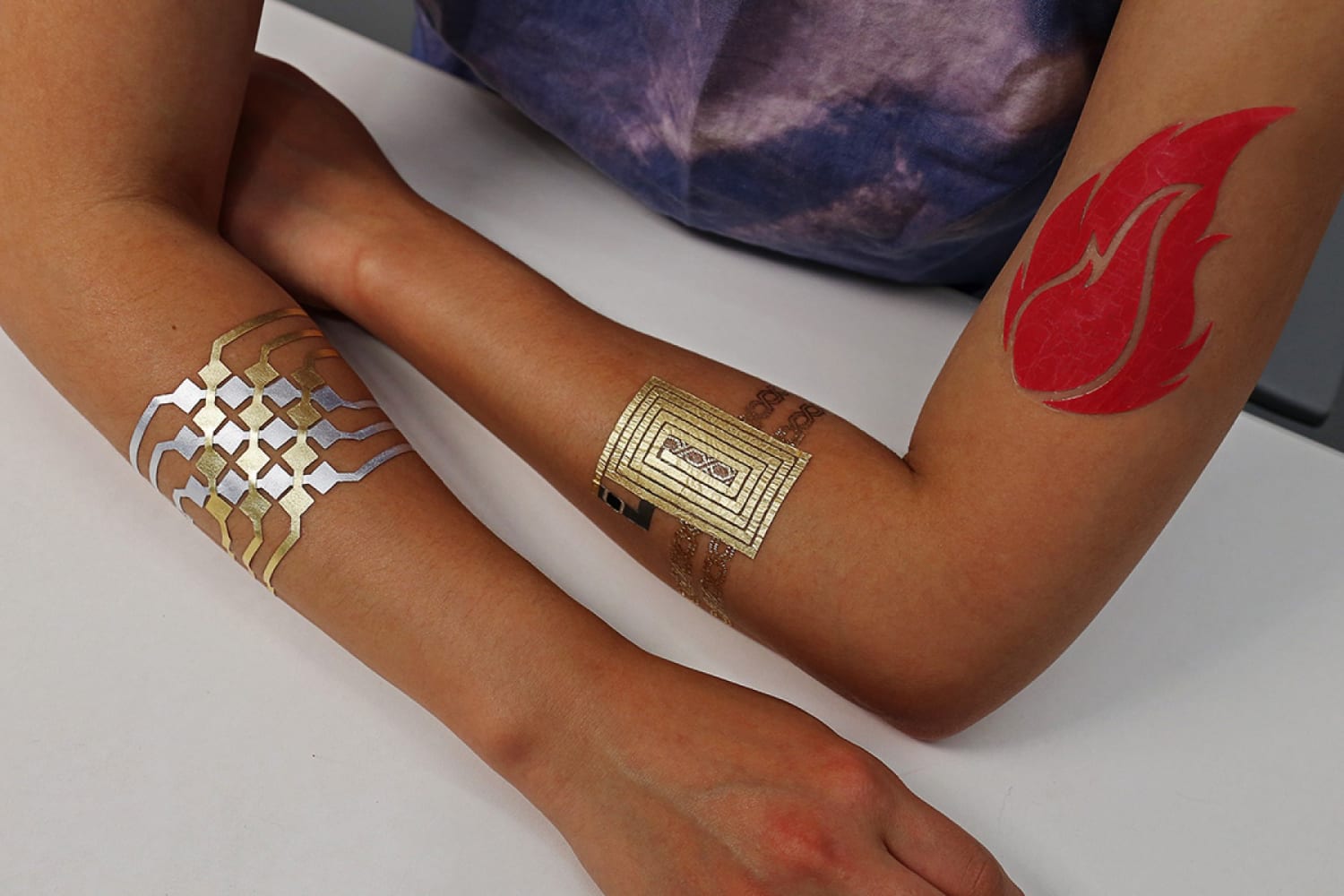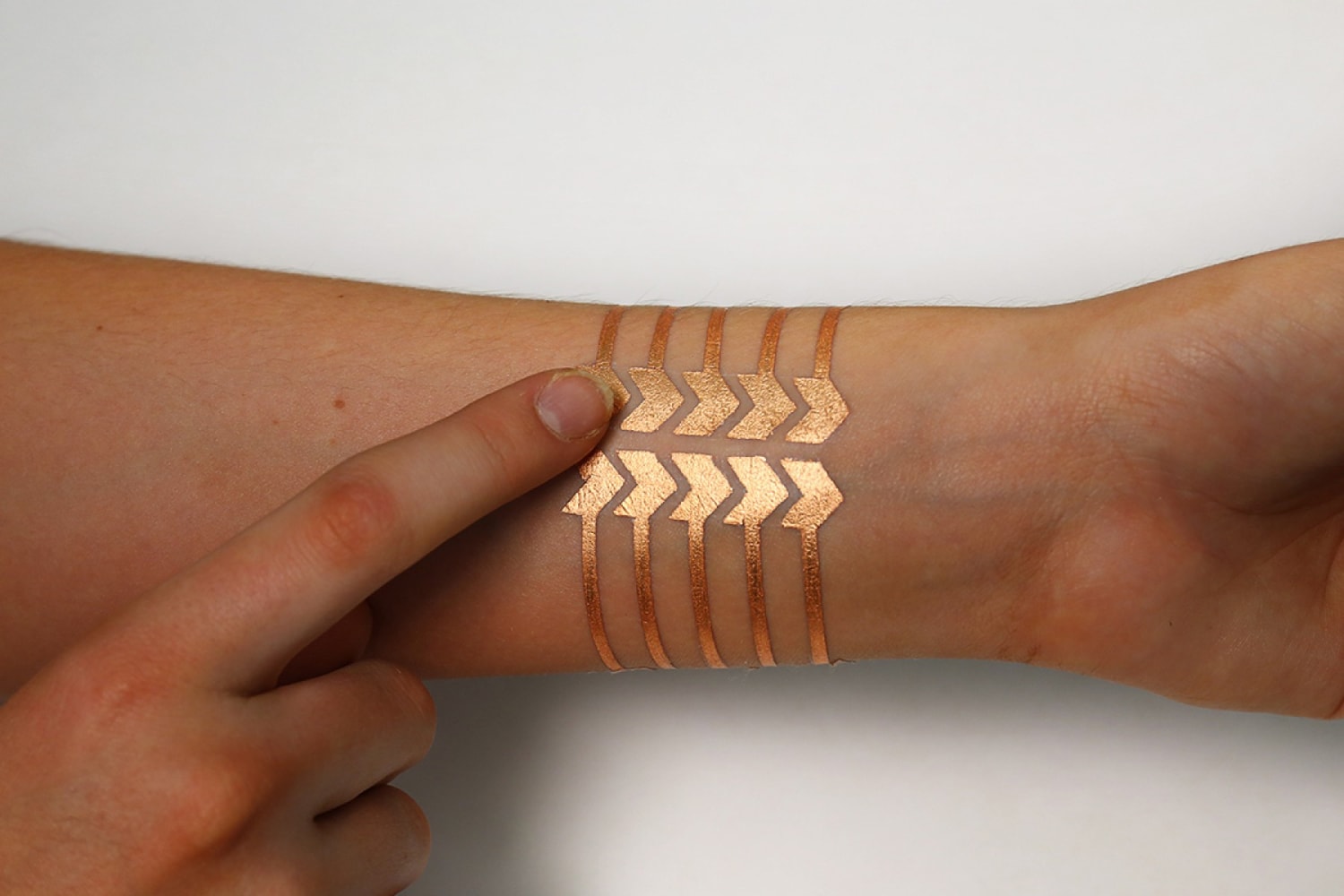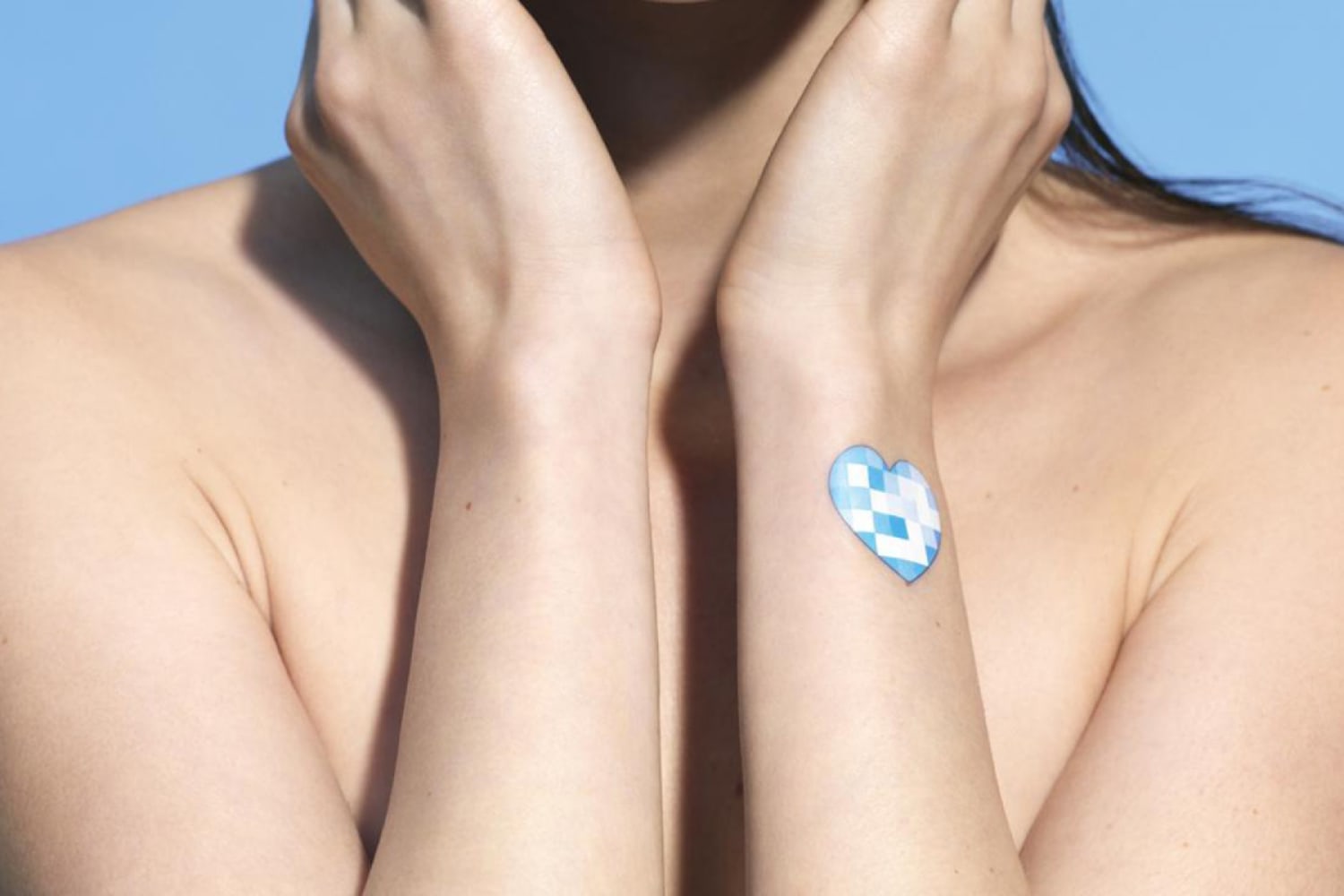On-body wearables have become widespread in the past few years. Now, researchers say that wearable technology will soon be small and flexible enough to adhere directly to the skin. “Electronics keep getting closer to us—from a computer on your desk to a Fitbit on your wrist,” John Rogers, founder of wearable electronics company MC10 and a pioneer in the field of stretchable electronics, told Fast Company in June. “We’re just scratching the surface.”
Scientists are on the verge of turning human skin into the next frontier of wearable tech.

In August 2016, researchers at MIT unveiled the DuoSkin, a “smart” tattoo inspired by metallic temporary tattoos. The tattoos are printed on gold leaf—a nod to fashion that also happens to conduct electricity. Additional, surface-mounted components then turn the tattoos into fully functioning interfaces.
“There’s this emerging popularity in these metallic temporary tattoos, and they have really enabled the skin to be put in the spotlight again as a surface for decoration,” said Cindy Hsin-Liu Kao, a researcher on the project. “We draw a lot from the usability and also the aesthetics of metallic temporary tattoos into the design of our on-skin interfaces.”

Input devices turn the tattoos into mini-trackpads. Wearers can use them to control smartphones, gaming or music from the skin. The tattoos could also be used to display outputs, changing color to represent emotion or body temperature. Depending on the components attached to the tattoos, they could be used to transmit data from the skin directly to other electronics. The process is affordable and accessible, and designed to be open to a variety of users.
Although not as design-forward, skin wearables also have potential to revolutionize health care and biometric tracking. Engineers at the University of California San Diego have developed a sensor that measures blood alcohol content (BAC) from skin sweat. The device is intended for use by doctors and police officers to provide on-the-spot BAC analysis. However, a 24-hour version is also in the works, which could be used by individuals to track their own intake.

While these new products are prototypes, two flexible skin-adhering wearables have recently hit the market. L’Oréal’s My UV Patch (marketed under subsidiary La Roche-Posay) is a small patch that stretches to fit the skin like a high-tech sticker. Photosynthetic fibers change color when exposed to UV rays, and the patch also connects to an app that analyzes the skin’s UV exposure. My UV Patch debuted at CES in January 2016, and launched officially in August.
“The key was to design a sensor that was thin, comfortable and virtually weightless so people would actually want to wear it,” said Guive Balooch, global VP of L’Oréal’s technology incubator, in a press release. “We’re excited to be the first beauty company entering the stretchable electronics field and to explore the many potential applications for this technology within our industry and beyond.”

MC10, the company behind the patch’s stretchable electronics, also released the BioStamp Research Connect in January. The stamp is a flexible sensor that allows doctors or researchers to measure body motion and muscle activity even during sleep or exercise. In April, MC10 partnered with a company to bring more consumer applications to the stamp, including hotel room access, event registration, and even cashless payments.
In tandem, researchers are developing even more creative uses for on-skin wearables. In June 2016, researchers at Tel Aviv University developed an emotion-mapping temporary tattoo, which used skin electrodes to track facial expressions. Although developed for medical researchers, the on-skin sensor could one day prove useful for commercial applications, from advertisers conducting focus groups to employers looking to quantify employee satisfaction.
In April 2016, J. Walter Thompson Japan partnered with a group of soba restaurants in Japan to create a temporary tattoo to raise awareness of soba allergies. (The popular buckwheat-based noodle is a common food allergy in Japan.) With a depreciating yen, more tourists than ever are visiting Japan, raising concerns about unintentional allergy attacks. When soba water is applied to the stick-on tattoo, it changes color to indicate whether or not a wearer is allergic.
Moving forward, wearables will likely continue to evolve in ways that are both novel and convenient for consumers. As technology advances, brands will not only be able to experiment with new functions for tattoos, but new designs as well.
Please provide your contact information to continue.
Related Content

VML Shines at the ANDY Awards

